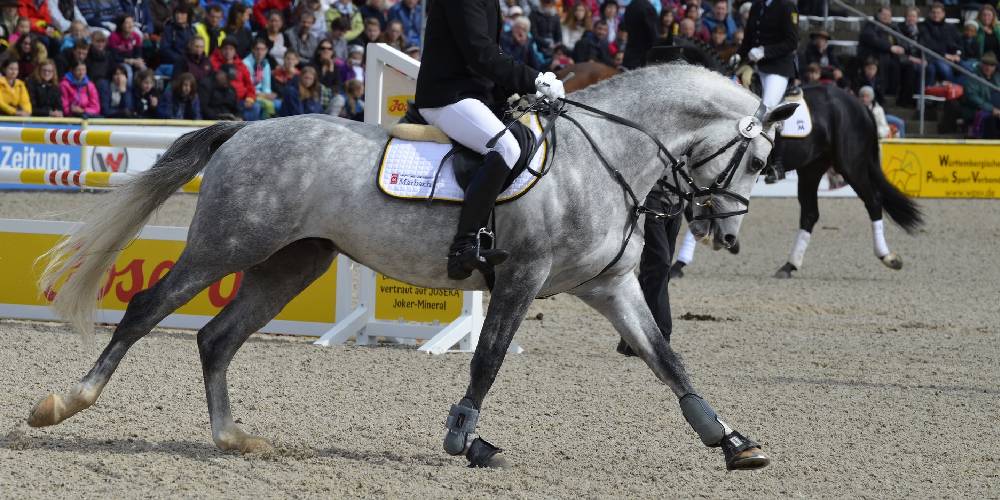Being a riding instructor, I must teach my students from the ground up about what it takes to be a good rider and how to ride and care for a horse in the first place. Because of this, I have had to take all the things that have become subconscious to me over the years and install those things into the minds of my students from the get go. Things that have become natural for me in the saddle are things that I must teach my students from the start so they don’t start to develop bad habits in the early stages of their riding careers.
Having been a self-taught rider in the early years of my riding, I had a LOT of bad habits that needed to be corrected when I entered into the professional riding world. Because of this, I felt the need to create this list to help out all of my new riders out there so you don’t enter the riding world with millions of bad habits like I did.
If you follow these tips, not only will you begin riding with some great tips and good habits to get you started, but you will also look much more like a professional in the saddle
These are 10 riding tips for beginners that you need to know:
1. Wear Proper Riding Equipment and Apparel
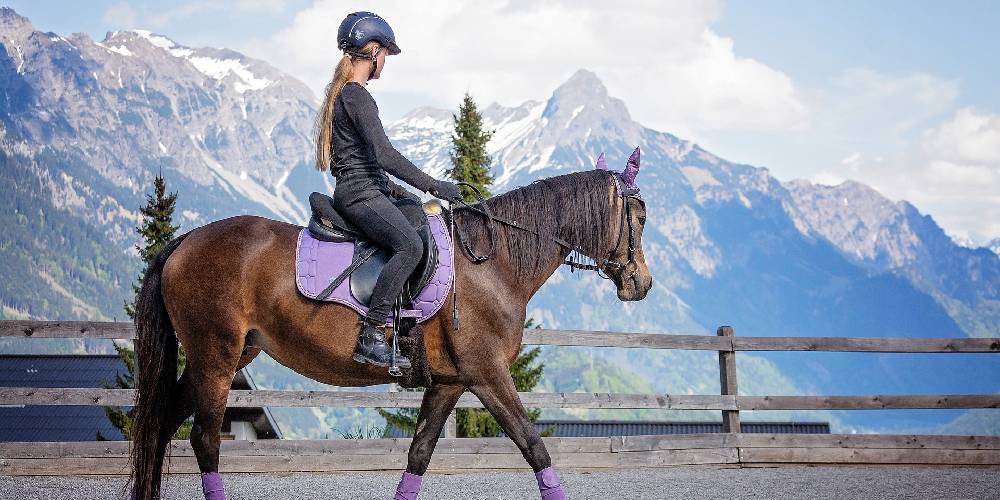
Whether you are riding in the English style or in the Western style, showing up to ride with the proper equipment and apparel is important. Believe it or not, riding clothes are not designed just for looks, there is a purpose for the boots and pants.
In both English and Western styles of riding, you must always wear proper pants and footwear. Closed-toe shoes are always a must, and if you can find boots to wear, that’s even better.
Horses are large heavy animals and getting stepped on is not uncommon. Make sure you are protecting your toes whenever you are working with or around horses.
The reason boots are preferred over just any old sneakers is because of their heel. When you are riding, having a heel on your shoe is greatly recommended. This is because the heel helps to stop your stirrup from getting stuck on your foot which helps to reduce the chances of you falling off and getting dragged by your horse.
Pants are worn to help protect the inner legs from things like:
- Pinches
- Bruises
- Leather Burns
- Scratches
- and other injuries
Please don’t be that person who shows up to ride wearing a mini skirt and sandals. Pants and closed-toe shoes (if you don’t have access to boots) are a must for your comfort and safety. (You will also look a lot more professional)
Helmets are also always a must. Please do yourself a favor and always ride with a helmet. Even Olympic level riders ride their horses when wearing helmets. The last thing you want to happen is to fall off and get a serious head injury because you failed to use a helmet.
Remember:
No one is too cool to wear a helmet
2. Sit Up Tall With Good Posture
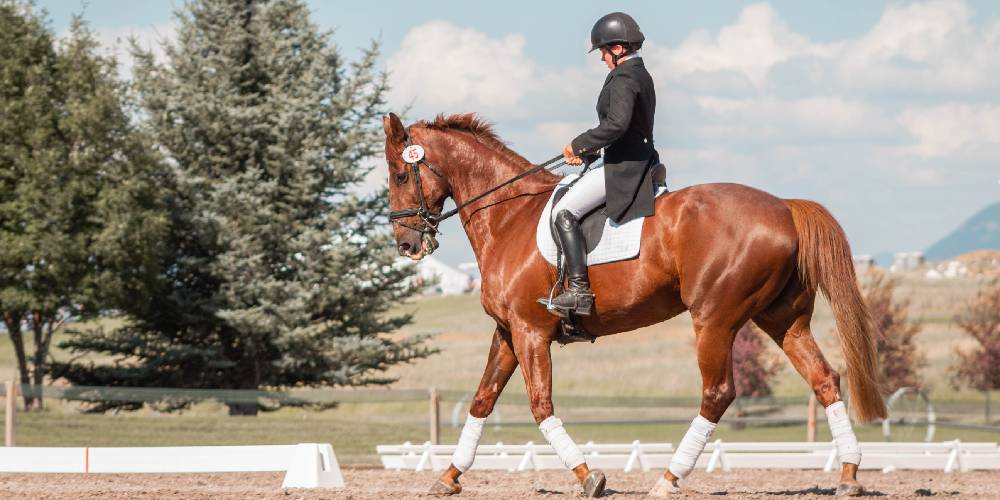
No slouching allowed! Though you want to stay relaxed, sitting up tall is important not only for looks, but for balance purposes too. Trust me, it is a lot easier to ride sitting up straight than it is bent over.
Sometimes, horses will feel that you want them to go faster if you lean forward a little too much because of slouching. This can cause your horse to speed up when it isn’t wanted.
Sit up tall but remain relaxed and you will notice how much easier it is to ride.
Riding horses regularly is also a great way to improve your posture and you will notice you stand and sit a lot straighter after you have been riding for a while.
3. Keep Your Body Relaxed and Move With the Horse
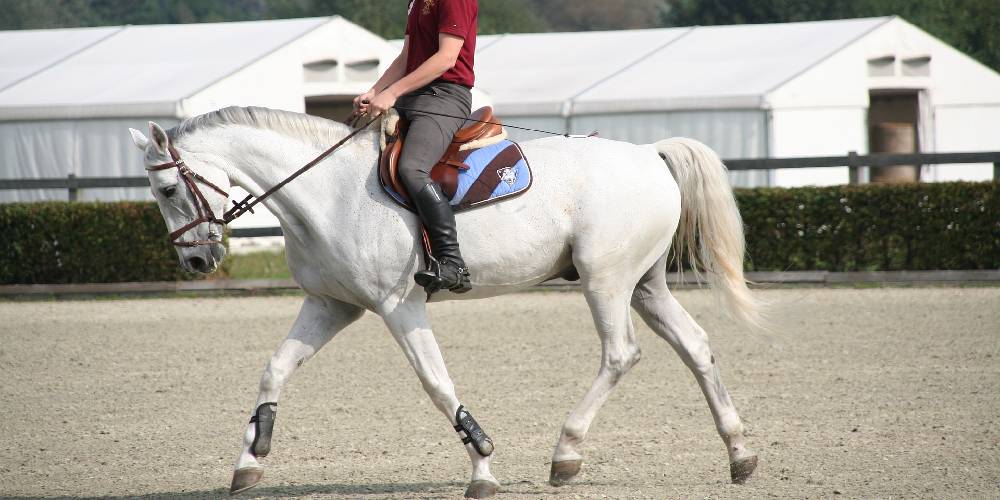
This was one of the many bad habits I developed that took me forever to break. I would keep my back ramrod straight and stay so stiff and rigid that my body would not flow with my horse at all. Being stiff like this would make my horse become edgy and make it really hard to keep him relaxed because I wasn’t relaxed myself.
You don’t want to be so relaxed that you slouch over and ride like a floppy sack of potatoes, but you also want to make sure that you aren’t a rigid pole either. Keep your body upright, but let your lower body and hips move with your horse so you and your mount flow and move together more rhythmically.
To help break this habit, take a deep breath every few minutes when riding and relax your body completely. This helped me to realize when I had become stiff and aided in my working out of it.
4. Be Gentle and Soft With Your Reins
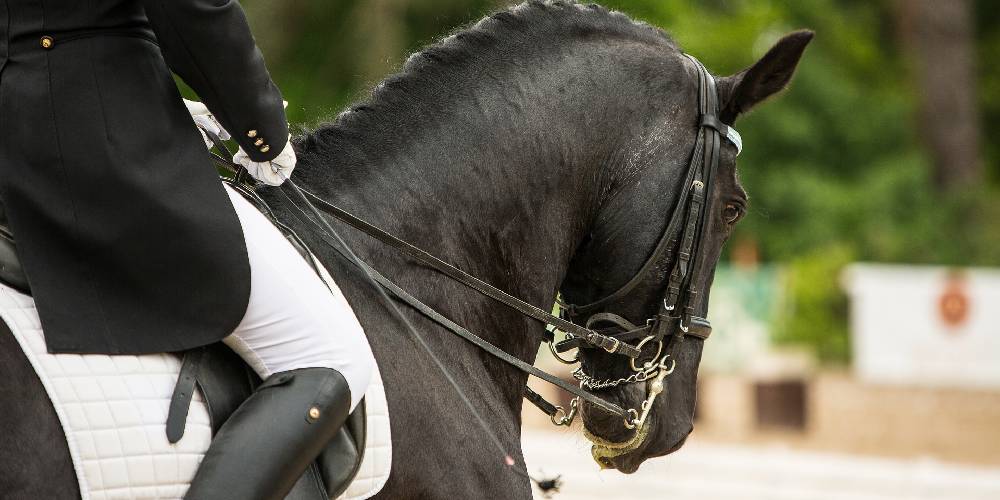
This is a very important thing to remember. Keeping your hands soft and gentle is a must! Your reins are attached to a bit, which is a metal mouth piece that the horse keeps in his mouth. If you are cranking on this piece with your reins, your horse can become badly injured by this bit. When you are using your reins for steering, stopping, turning, or collecting, keep this fact in the back of your mind, that you are pulling on a metal thing in your horse’s mouth and it can be painful for him if used aggressively.
Some bits used on horses are very harsh, while others are very gentle. Just try to always use your reins carefully and never over pull or over use your hands.
Much of the steering you will do when riding will be done with your leg pressure and leg aids. If your horse works well off of your legs, using a lot of rein may be unnecessary.
5. Eyes On The Road!
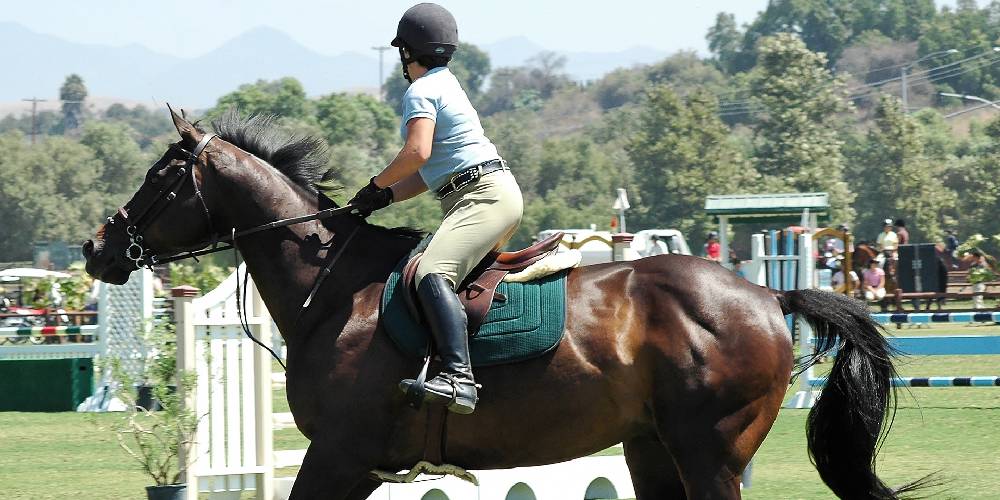
If you are driving a car, you look out the windshield at where you are going nearly the entire time you are driving. If you are steering your car, you also generally will look to where you want to go and then turn your car in that direction. This is the same for riding horses.
When riding, keep your eyes up and look where you are going. Little glances down to make sure you are on the right diagonal or lead are okay, but make sure you are looking up between your horses ears rather than staring down at your hands!
Keeping your eyes up will also help you to steer your horse easier, as you can see exactly where you want to go. Not only this, but keeping your eyes up and your attention up and not down will help you to stay centered and upright on your horse. If your eyes are looking down at your hands, your posture may droop down with your gaze.
Even riders who jump their horses are very attentive to where they are looking. Their eyes are always up and they are looking at their path to their next jump even if they are barely just reaching the first one.
6. Mount Your Horse With Confidence
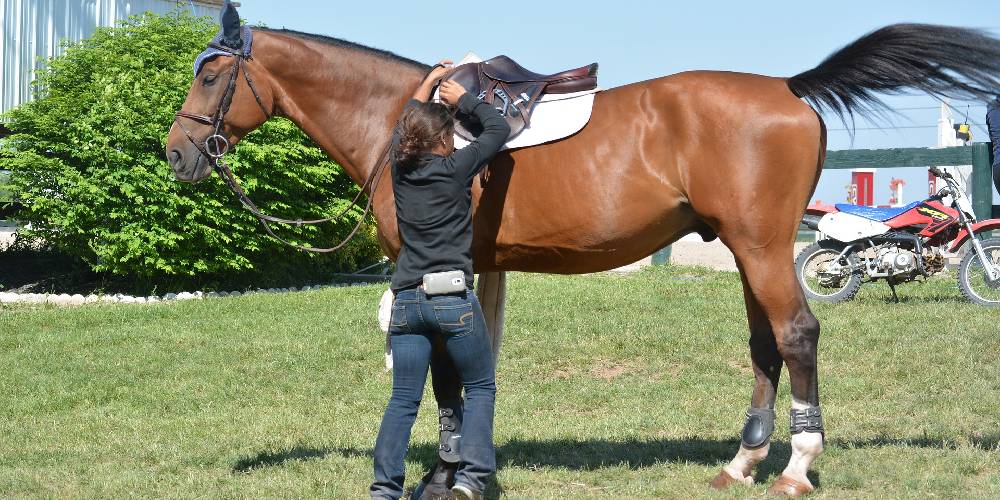
When approaching a horse to mount it, you always want to do so confidently. If you are scared when approaching and mounting a horse, the horse can feed off of that energy and become scared and nervous too.
If you do have some nerves about mounting, just take a deep breath and when you mount, keep your body relaxed and your mind calm. Horses can sense your emotions and if you are terrified they will start to get worried and scared too.
To mount your horse, approach them and greet them. Then, put your left foot in your left stirrup, and stand up in it before swinging your right leg over your saddle.
Mounting quickly and confidently is important as it helps your horse not to be worried. If you mount nervously and slowly your horse might begin to wonder why you’re worried and may think he needs to worry too!
7. There is no Need to go Fast!
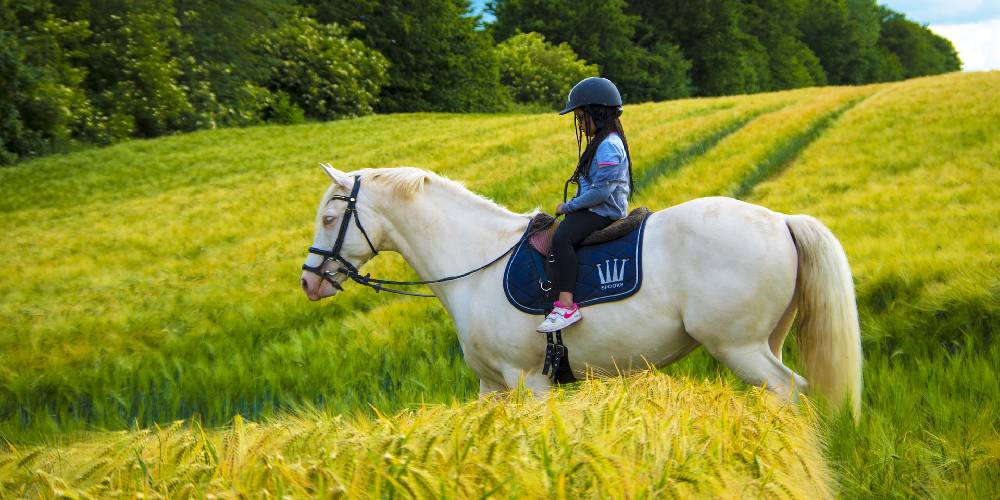
Just because someone knows how to ride a horse at a gallop does not mean that they need to go top speed whenever they ride. Sometimes it is nice to just take it easy and walk around. I know that when I ride, I don’t feel the need to speed around the whole time.
Actually, to tell you the truth, most of the rides that I have done recently have just been walking and trotting without jumps involved!
It is 100% okay to just take it slow. Going slow is good for you to get comfortable riding and it is good for your horse to help him stay calm and relaxed.
It is also better on your horse too! Doing the basics helps to get your horse stronger, keep him relaxed, and reduces the chance of him ever getting injured.
8. Remember to Steer With Both Your Hands and Your Legs
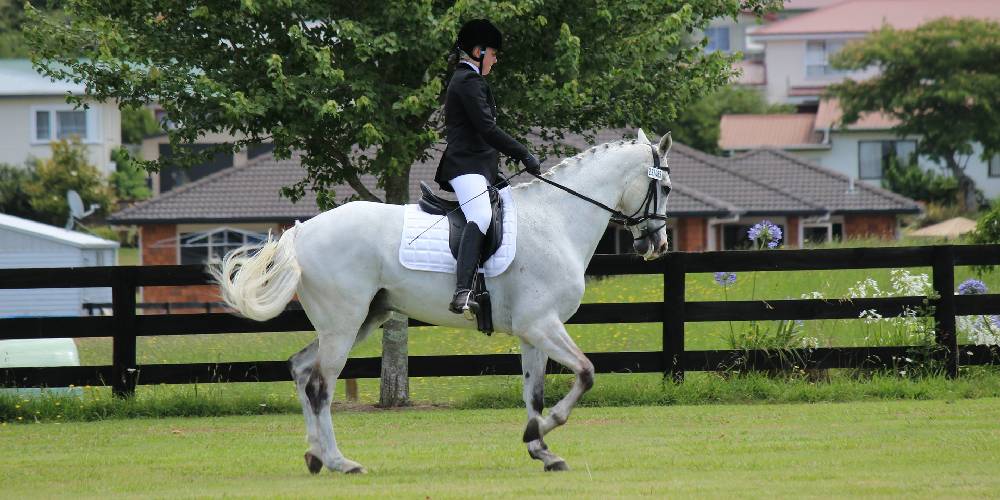
When you are steering your horse, keep in mind that your horse should be turning and moving off of leg pressure and not just your reins. Many people think that you just steer with your reins, but this is not the case at all!
Leg pressure is actually one of the biggest parts of steering. You use your legs to not just hold onto the horse, but to also turn them around, guide them on a specific course, and keep them along your rail.
Learning to use your legs and identifying your inside and outside legs as needed is important for keeping your horse on course and prevent him from just wandering away to go on his own adventure.
9. Remember to Keep Your Heels Down!
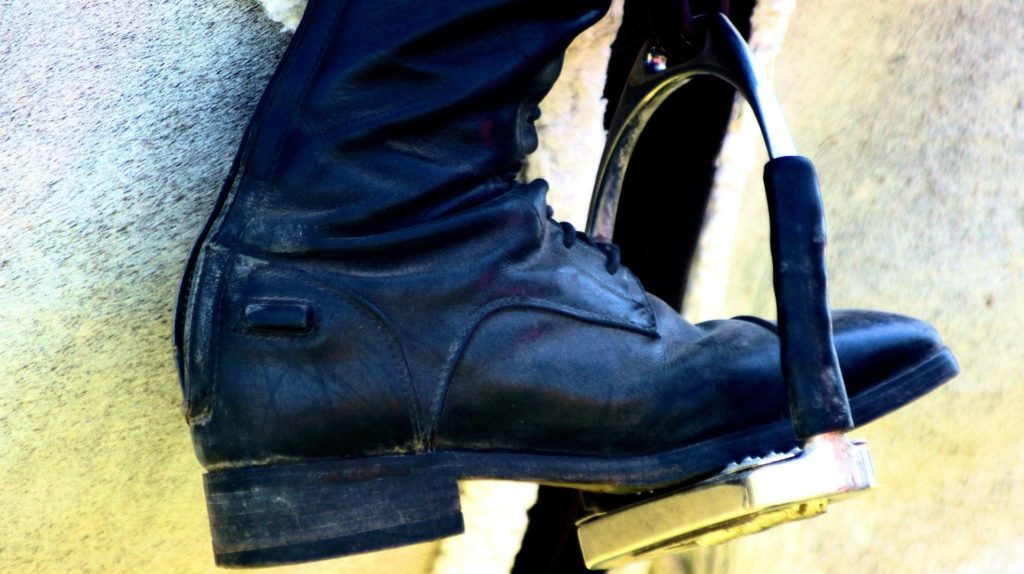
Not only can you be docked points in an equitation class for not riding with your heels down, but you can also risk getting yourself in a dangerous situation if you don’t put your heels down.
If your heels aren’t down, especially if you are riding without a heel on your shoe, you are a lot more likely to get your foot stuck in the stirrup. If you were to fall off a horse with your foot caught in the stirrup, you are likely going to get dragged by the horse. Keeping your heels down will prevent your foot from getting stuck and help you to keep your feet and legs in the proper position.
This is a large part of the reason why boots are recommended, so the heel on the boot can help us keep our foot from getting stuck, but keeping your heels down really helps too.
You would rather have your foot fall back out of your stirrup than have it fall forward into your stirrup.
10. Don’t Hold onto Your Saddle for Balance!
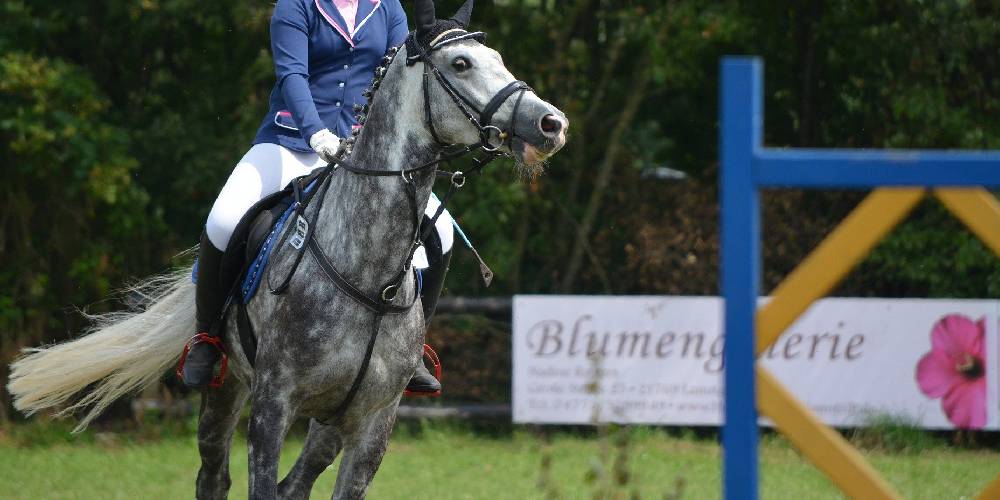
Beginner level riders, especially those starting in a western saddle, will often make the mistake of hanging onto their saddle to help them balance and stay on. This is never something you should get into the habit of doing.
Your hands should always be on your reins and shouldn’t ever be used to hold onto your saddle. This is because if your horse starts misbehaving whether it means he’s going fast when you didn’t ask for it, if he bolts, if he bucks, or if he spooks, your hands should be on your reins to regain control of your horse rather than letting them go and clinging on for dear life.
Make sure to never get in the habit of holding your saddle or saddle horn for support and use your seat and your legs to hold you on instead.

